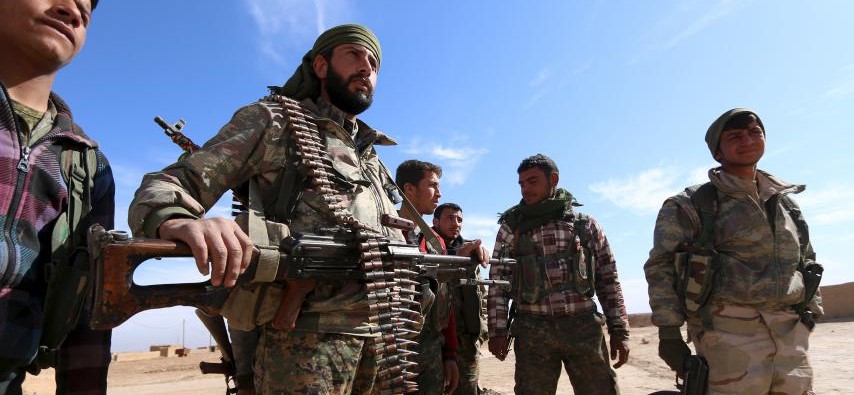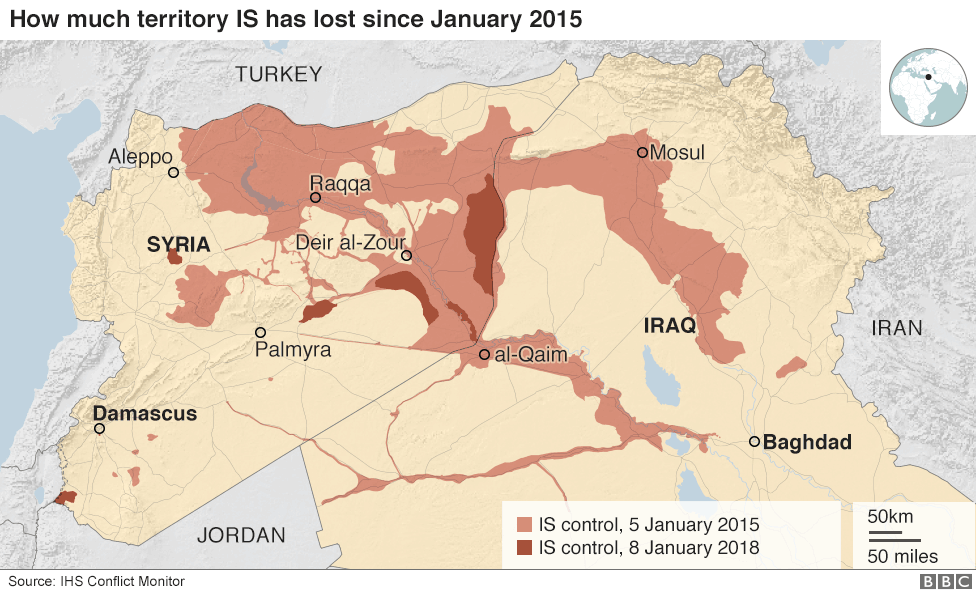US-Backed forces launch final offensive on ISIS
September 12, 2018 | Expert Insights

U.S.-backed forces have launched what they hope will be the final battle for territory in the four-year-old war against the Islamic State.
Rebel forces will be mounting an assault on the militants’ last major bastion in the eastern Syrian desert.
Background
The Syrian Civil War has been going on since 2011. It began during the Arab Spring protests due to resentment towards the government of President Bashar al-Assad. The war is being fought by several factions: the Syrian government and its allies, a loose alliance of Sunni Arab rebel rebel groups (including the Free Syrian Army), the majority-Kurdish Syrian Democratic Forces (SDF), Salafi jihadist groups (including al-Nusra Front) and the Islamic State of Iraq and the Levant (ISIL), with a number of countries in the region and beyond being either directly involved, or rendering support to one or another faction.
The Islamic State of Iraq and the Levant also known as ISIL and ISIS that is considered a Salafi jihadist militant group and unrecognized proto-state that follows a fundamentalist, Wahhabi doctrine of Sunni Islam. It gained global prominence in early 2014 when it drove Iraqi government forces out of key cities in its Western Iraq offensive, followed by its capture of Mosul and the Sinjar massacre.
In 2014 ISIS took over large parts of the city of Mosul and emerged as a prominent militant group in the world. It was in the Great Mosque of al-Nuri where ISIS’ leader Abu Bakr al-Baghdadi made his first and only public appearance and declared a “caliphate”.

Read more about own analysis on the fall of the ISIL here and here.
Analysis
Ground forces with the U.S.-backed Syrian Democratic Forces began the offensive on Monday night, advancing toward the town of Hajin aided by U.S. airstrikes. Hajin is the largest town in an approximately 95-square-mile stretch of mostly desert terrain along the Euphrates River’s east bank. The conquest of this territory would mark an effective end to the Islamic State’s “caliphate,” which at its peak in 2014-2015 spanned vast areas of Syria and Iraq.
The battle, however, won’t spell an end to the threat posed by the militants, who are already regrouping in pockets of territory in Iraq and also maintain cells scattered across the vast desert area to the west of the Euphrates, which is under Syrian government control.
U.S. military officials say they are anticipating a tough fight for the Hajin area, which has served as the final retreat for Islamic State fighters who chose not to surrender or flee earlier battles. U.S. and SDF estimates put their number at between 1,500 and 2,500 out of an army that may have numbered as many as 100,000 at the height of the group’s prowess.
However, the remaining fighters include the toughest and most ideologically committed militants of the entire war, with experience gained in battles such as Mosul and Raqqa. They are unlikely to give up easily. The militants have laced the area with underground tunnels, riddled it with explosive devices and are expected to launch multiple suicide attacks against their attackers rather than submit.
It has also been widely speculated that the town, or one of the surrounding villages, could be the hiding place of top Islamic State officials, including perhaps their leader, Abu Bakr al-Baghdadi. Secretary of Defense Jim Mattis said Tuesday that he “wouldn’t be surprised” if some Islamic State leaders were in the Hajin area.
The offensive in eastern Syria comes at a time when international attention has been focused elsewhere in the country — on Idlib province in the northwest, where Syrian government forces are massing for a possible assault on a rebel stronghold. The United States maintains about 2,000 troops in north-eastern Syrian, across an area amounting to more than a quarter of the country.
They were dispatched there to aid in the fight against the Islamic State and in the process facilitated the expansion of the Kurdish-dominated SDF into vast areas of mostly Arab-populated territory.
Assessment
Our assessment is that ISIS is down but not out. The jihadists may be losing their territorial bases, but their ideology has not been vanquished. The group might continue to propagate its hateful ideas through social media. We feel that they may now be additionally motivated to possibly rise the attacks on European soil. We also feel that there is plenty of anecdotal evidence that battle-hardened fighters are returning to their European countries of origin.








Comments